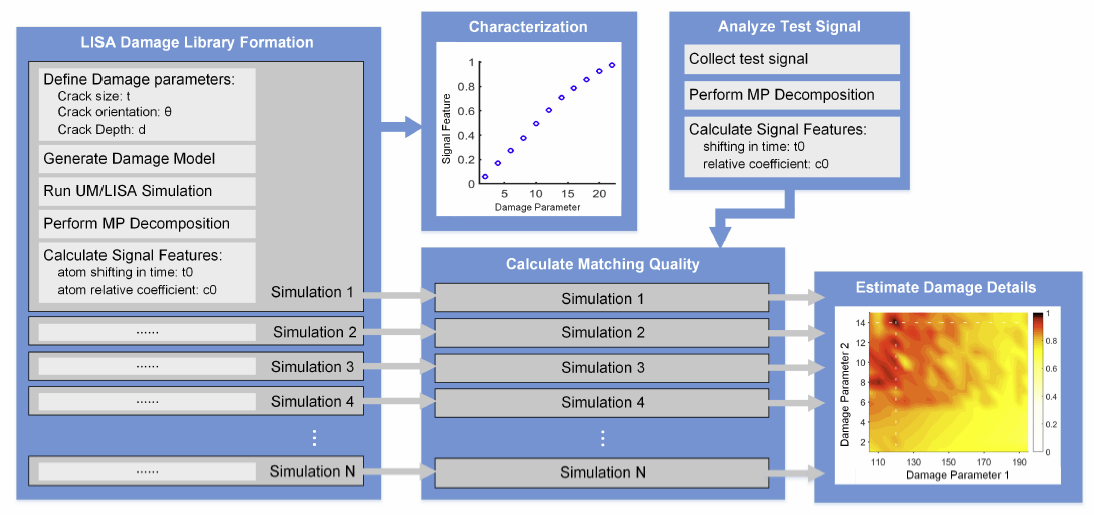Damage characterization based on nonlinear guided wave simulation and chirplet matching pursuit algorithm
The work presents a damage characterization framework based on a simulation library and matching pursuit algorithm to estimate damage features in typical aerospace structures. The large damage database is generated by numeric simulation. The recent development of the University of Michigan’s Local Interaction Simulation Approach (UM/LISA) is an ideal tool for generating such a damage database in a very efficient manner. It includes capability for piezoelectric coupled field simulation, non-reflective boundary techniques, and contact penalty method for nonlinear guided wave simulation, and can execute on multiple-GPU platform for fast computation.
The selected damage identification problem is modeled as contact interface and simulated in UM/LISA using the contact penalty method. The process first populates a library of possible damage signals using UM/LISA by varying damage parameters, such as crack length, depth and orientation. The matching pursuit decomposes the damage difference signals into atoms and the atom parameters are used as signal features. Then the algorithm evaluates a matching merit metric and its special distribution provides parametric regions of damage presence. A representative model of fatigue cracks on aluminum plate considering various crack scenarios is investigated to test the effectiveness of the algorithm. The relation between the crack features and signal features provides better understanding of the nonlinear interactions between the guided waves and fatigue cracks. The matching quality plots demonstrate that the framework can provide good estimation of the crack parameters.
The main flow of the algorithm is presented below

For more information about the algorithm and features, please check the following references.
References
- Hui Zhang, Carlos E. S. Cesnik, “Damage characterization based on nonlinear guided wave simulation and chirplet matching pursuit algorithm”. Proc. SPIE 9805, Health Monitoring of Structural and Biological Systems (2018).

